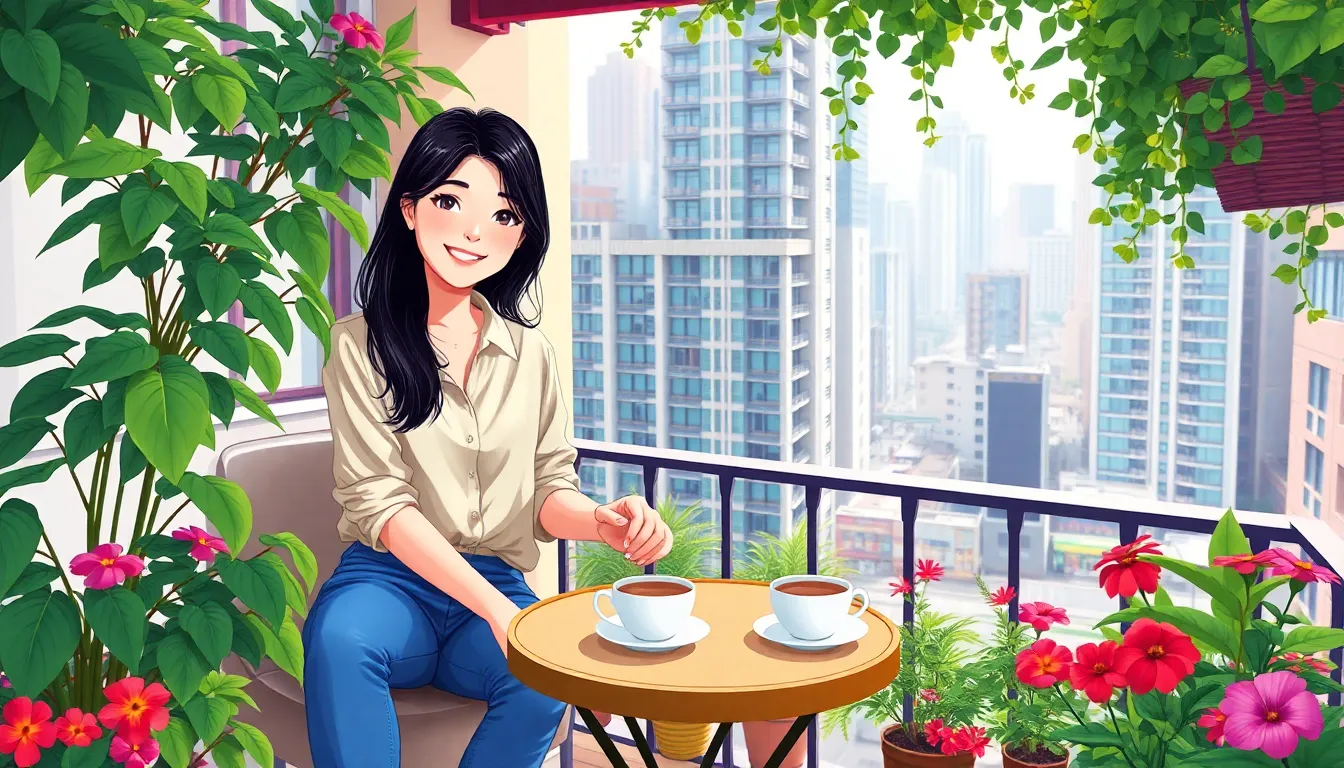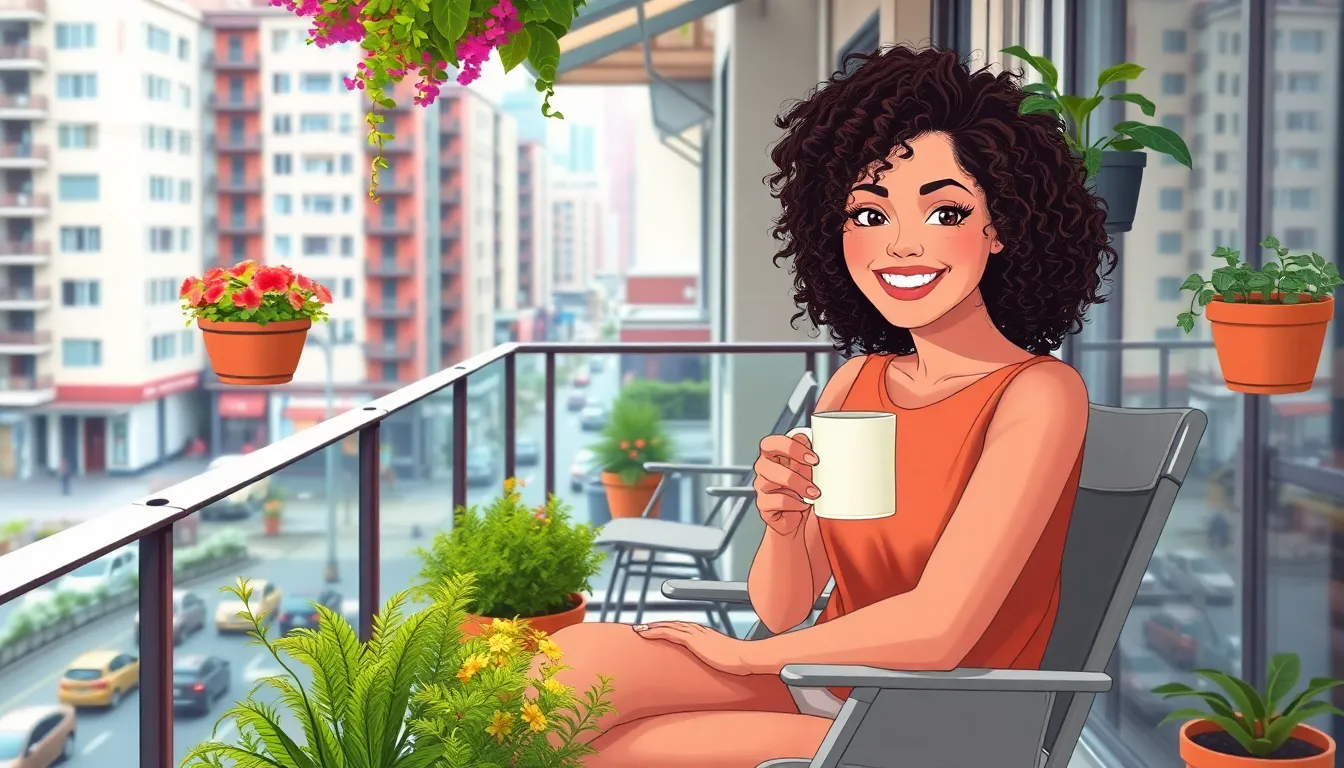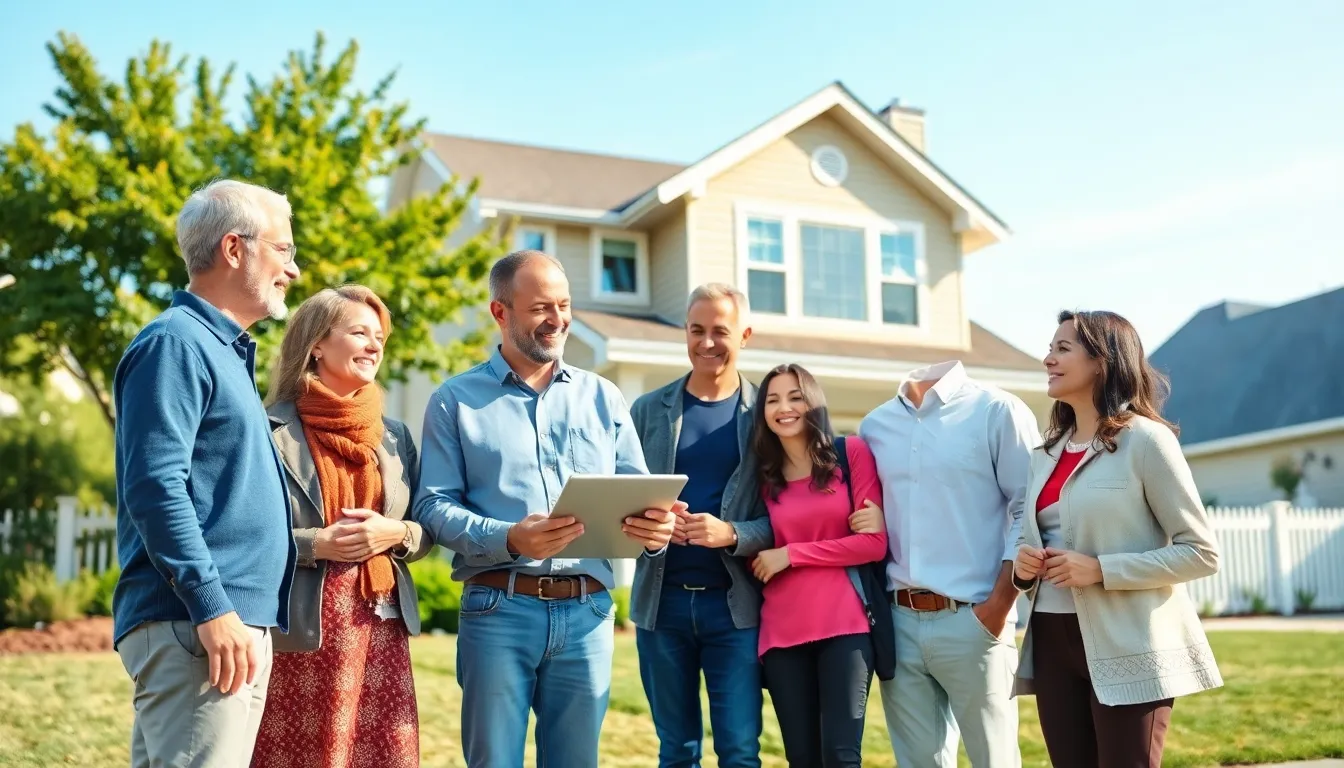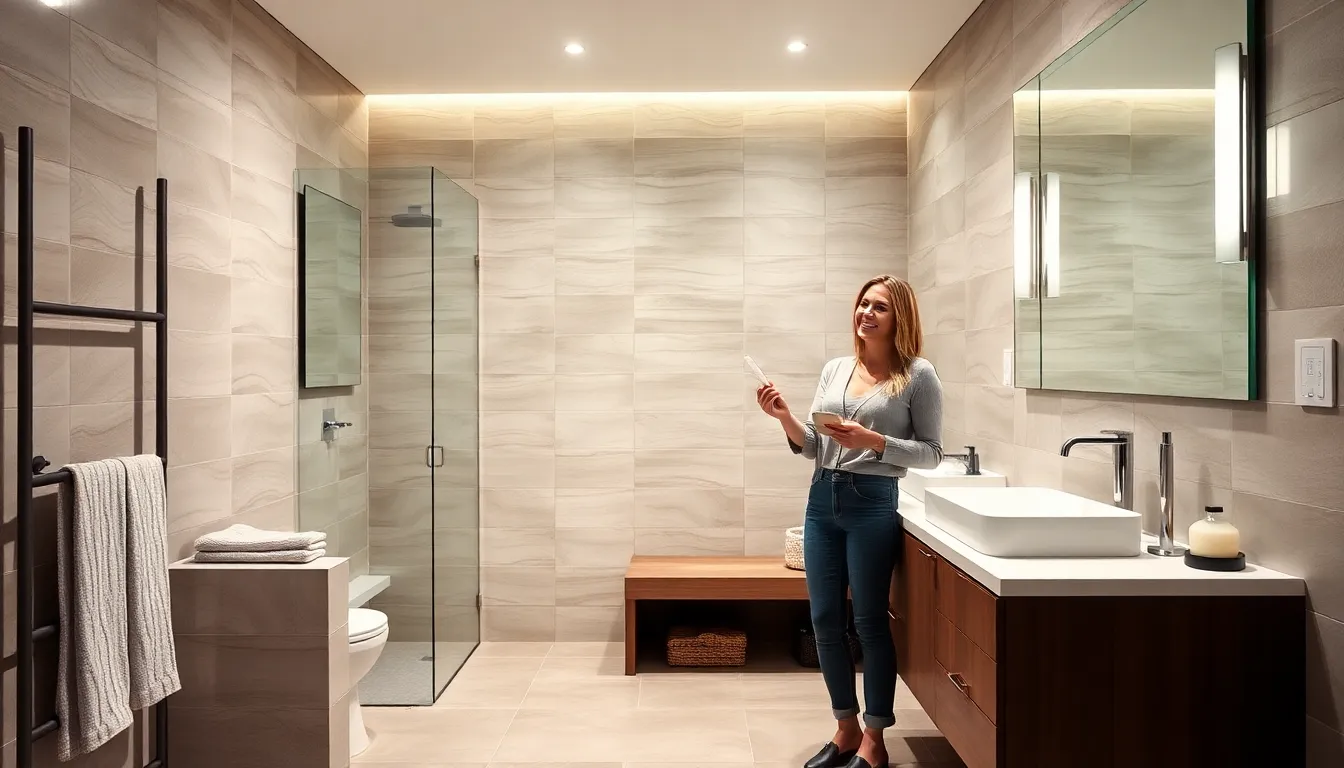In the concrete jungle where dreams are made, urban balconies often serve as the unsung heroes of city living. They’re the tiny oases that transform cramped apartments into personal retreats, offering a slice of nature just a few floors up. Who wouldn’t want to sip morning coffee while pretending to be in a trendy café, all while dodging pigeons and the occasional neighbor’s laundry?
Table of Contents
ToggleOverview of Urban Balconies
Urban balconies serve as vital extensions of living spaces in densely populated areas. These small retreats offer residents a personal oasis, crucial for relaxation and connection to nature. Views from balconies can range from bustling streets to serene park landscapes, providing unique perspectives of the urban environment.
Many people design balconies to maximize utility, integrating seating, plants, and outdoor decor. Urban residents often use these spaces for gardening or socializing, enhancing their overall quality of life. Some studies show that having access to outdoor space, even in small forms, significantly improves mental health and provides an escape from city stresses.
Materials used in balcony construction vary widely, from metal railings to durable wood decking. Depending on climate and building regulations, residents customize their balconies to reflect personal style and functionality. With increasing awareness of sustainability, many select eco-friendly materials and implement water-efficient plants in small garden spaces.
Urban balconies also promote biodiversity by providing habitats for birds and beneficial insects. These features contribute to the overall ecosystem within cities. By adding greenery, individuals help reduce heat and improve air quality, even in compact urban settings.
Overall, urban balconies not only enhance residential living but also foster a sense of community as neighbors share their cherished spaces. They represent a blend of nature and city life, creating an essential balance in modern urban living.
Benefits of Urban Balconies

Urban balconies offer various advantages, enhancing the quality of life for residents in crowded city landscapes.
Enhancing Outdoor Space
Balconies create a private outdoor area for residents. Many people transform these spaces into cozy retreats with seating and greenery. These areas can host morning coffees or evening gatherings with friends. Such setups bring the feel of nature into urban environments, promoting relaxation. Additionally, balconies provide a personal haven for hobbies like gardening or reading. The presence of plants improves aesthetics and creates a serene atmosphere, making balconies a valuable extension of living spaces.
Improving Air Quality
Urban balconies contribute positively to air quality. Plants absorb carbon dioxide while releasing oxygen, enriching the surrounding air. Green spaces help combat urban heat, leading to lower temperatures in tightly packed neighborhoods. By adding greenery, individuals promote biodiversity and attract beneficial insects. In turn, this contributes to healthier ecosystems within urban settings. With improved air quality, residents experience enhanced well-being and reduced stress levels. Balconies serve as essential components in fostering a greener city environment.
Design Considerations for Urban Balconies
Designing urban balconies involves thoughtful choices to create functional and aesthetically pleasing spaces. Balconies serve as extensions of living areas, making it essential to consider furniture and greenery in the layout.
Choosing the Right Furniture
Selecting the right furniture maximizes comfort and utility on urban balconies. Opt for space-saving solutions like foldable chairs and tables, which cater to smaller dimensions. Material choices impact durability; weather-resistant options such as aluminum or treated wood stand up to the elements. Prioritize comfort with cushions, as they invite longer relaxation periods. Arranging furniture for easy movement enhances accessibility and creates defined zones for various activities. Consider versatility in seating arrangements, allowing for both solo enjoyment and gatherings with friends.
Incorporating Greenery
Plant selection transforms balconies into vibrant retreats. Use potted plants or vertical gardens to save space while adding life. Herb gardens not only beautify the area but also provide fresh ingredients for cooking. Choose native plants, as they require less maintenance and support local ecosystems. Incorporating succulents or drought-tolerant species can reduce water usage and upkeep. Create a mini oasis with planters in varying heights for visual interest. Prioritizing greenery fosters wellness and enhances urban biodiversity, connecting residents to nature.
Challenges with Urban Balconies
Urban balconies present various challenges for city dwellers seeking to maximize their outdoor spaces.
Space Limitations
Space restrictions often dictate balcony design in urban environments. Many balconies measure less than 50 square feet, limiting furniture choices and plant arrangements. Small areas necessitate creative solutions like foldable furniture or vertical gardens. In these compact settings, choosing lightweight materials can facilitate ease of use. Residents might prioritize multifunctional items to enhance usability, ensuring every inch serves a purpose. The challenge remains to create a cozy atmosphere without overcrowding the limited space.
Weather Considerations
Weather conditions significantly impact the usability of urban balconies. Harsh sun affects outdoor comfort, leading residents to seek shade solutions such as umbrellas or retractable awnings. Additionally, wind can damage plants and discourage outdoor activities. To combat this, selecting wind-resistant furniture and durable planters becomes essential. Rain can erode surfaces and cause slippery conditions, making it crucial to choose appropriate flooring materials. Seasonal weather shifts prompt residents to adapt their balcony designs for year-round enjoyment. Balancing aesthetic appeal with weather resistance remains vital for successful urban balconies.
Urban Balcony Trends
Urban balcony design trends emphasize functionality and sustainability. Residents increasingly prioritize eco-friendly materials that blend aesthetics with environmental consciousness.
Sustainable Materials
Sustainable materials enhance the appeal of urban balconies. Bamboo offers a renewable alternative for decking. Reclaimed wood, sourced from old buildings, adds rustic charm while reducing waste. Metal railings made from recycled materials provide durability. Additionally, composite materials combine recycled plastics and wood fibers, ensuring longevity and minimal maintenance. Many designers encourage the use of non-toxic finishes to combat the harmful effects of urban environments. Incorporating these materials fosters a greener approach to balcony design, encouraging biodiversity and improving air quality.
Multifunctional Spaces
Multifunctional spaces have gained popularity in urban balcony designs. Balconies serve various purposes, from relaxation zones to dining areas. Flexible furniture like foldable tables and chairs maximizes usability while minimizing clutter. Residents often include planters that double as seating or tables, enhancing space efficiency. Vertical gardens provide greenery within limited areas, which supports wellness and aesthetics. Outdoor storage solutions also contribute to functionality, keeping amenities organized. By designing balconies for multiple uses, residents optimize their outdoor experiences, transforming them into versatile retreats amidst busy urban landscapes.
Urban balconies play a pivotal role in enhancing city living by providing personal retreats that blend nature with urban life. They not only offer a space for relaxation but also foster connections with the environment and neighbors.
As residents continue to adapt their balconies to reflect personal style and functionality, these spaces become vital for mental well-being. The integration of greenery and sustainable materials further enriches urban ecosystems, promoting biodiversity and improving air quality.
With thoughtful design and innovative solutions, urban balconies can transform limited outdoor spaces into vibrant havens. Embracing these small oases allows individuals to enjoy the beauty of nature while navigating the complexities of city life.




